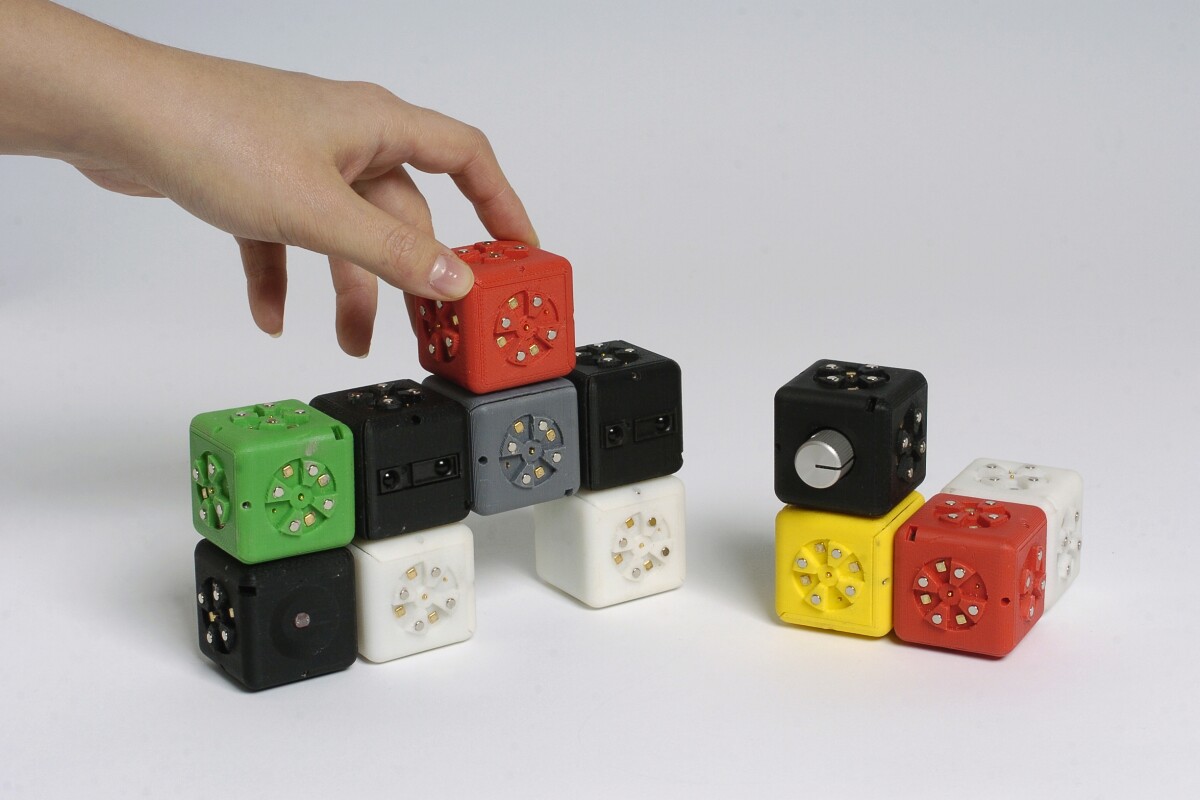Do you remember those colored building blocks you would use to learn words and numbers, or just construct mighty castles to keep your enemies outside? Well, they've now received a 21st Century update in the form of the Cubelets system. Currently made up of 20 colored blocks that snap together with the help of magnets, each one has a little computer inside which gives it different functionality to the others. One might be a sensor, another have wheels and another sport a potentiometer. The fun starts when you put them together. The behavior of the resulting robot depends on how the blocks talk to each other. Sweet.
The Cubelets robotic construction kit is described as "a toy that fosters computational thinking about complex systems" and is based on roBlocks modules created by Eric Schweikardt and Mark D Gross from the Computational Design Lab at Carnegie Mellon University in Pittsburgh, and brought to market by a spin off company founded in 2008. Each kit contains 20 magnetic blocks comprising five Sense blocks, six Action blocks and nine Think/Utility blocks. Each block has a tiny computer inside and is described as a robot in its own right, but when combined with another block, and another, they talk to each other and become a wholly different machine.

Every creation will need to include a battery block for power but beyond that requirement – experimentation is the way to go. For instance, you might connect a light sensing block to a speaker block and noise from the speaker will get louder as the light is increased. Then try it with a temperature sensing block, a thinking block and a drive block that sports a motor and rollers and see what happens. Just like Johnny 5, they can appear to be alive.
There's no programming involved, each block has a purpose of its own and overall functionality is automatically adjusted according to how the different blocks are snapped together. With safety in mind, each of the magnets which bring the blocks together is mechanically attached to the housing and each Cubelet has either five or six snap points. This leads to numerous possible configuration permutations, enough to keep any would-be robotics engineer (young or old) amused for some time.
The Cubelets are designed for people age 8 and older, made in the U.S. using components from China, Japan, and the USA and the first batch has already sold out. The company expects the next run to be available by the end of April, each kit will cost US$300.

Schweikardt told Gizmag that more modular additions to the Cubelet family are in development, "basically any type of sensor or actuator that you might imagine can be encapsulated in a Cubelet ..."
The following video demonstrates the kind of thing you can do with a few Cubelets. Production Cubelets will come in a variety of colors:










